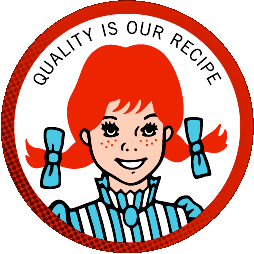Wendy’s Latest Brand Mistake.
 “Quality is our recipe” is the new tagline for fats food chain Wendy’s. It adorns all the stores. Quality is an industrial word. It’s not a food word. If you go to a Lidia Bastianich or Eric Ripert restaurant you’re not going to savor a meal and talk quality.
“Quality is our recipe” is the new tagline for fats food chain Wendy’s. It adorns all the stores. Quality is an industrial word. It’s not a food word. If you go to a Lidia Bastianich or Eric Ripert restaurant you’re not going to savor a meal and talk quality.
The key to branding is finding the right “claim” and proving it every day. I use three proof planks to support the claim. Three provides focus. Were I to parse the quality claim for Wendy’s I might select “ripeness” for vegetables, “natural” for ingredients, e.g., less additives, few GMOs, real sugar, and “immaculate facilities.” I’m just riffing here but you might actually build a nice story with this strategy. The problem, however, is the word quality. A far as claims go, it’s in the neighborhood, but a Norwegian neighborhood. Quick, name a tasty Norwegian food.
Brand strategy claims need poetry. Humanity. They need aspiration and emotion. Wendy’s can do better. This is a company that has always been ad campaign driven, not brand strategy driven.
Peace.



